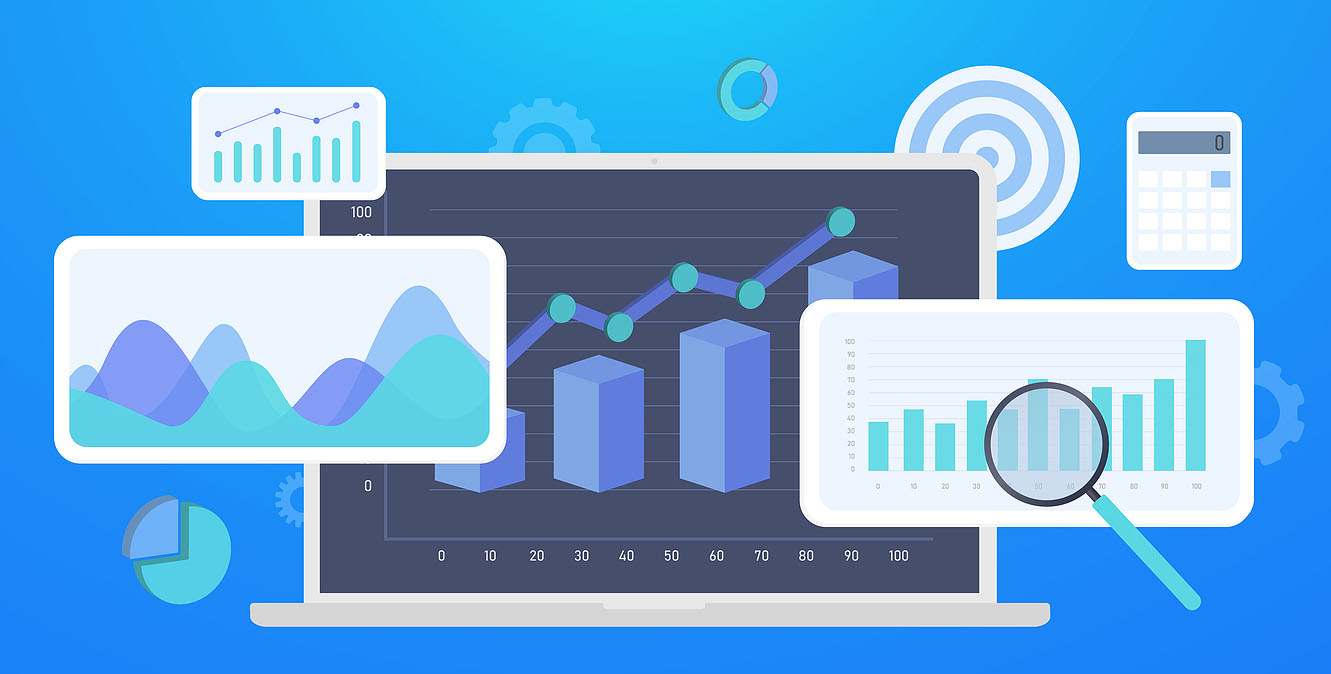
The Benefits of automatic Data Analysis for SME’s
Fear of high costs, limited resources and the thought that automatic data analysis is beneficial only to large corporations have, in the past, resulted in fewer SME’s adapting to the world of automatic data analysis. Many small businesses waste countless hours doing analysis on their own without even realizing it, without achieving tangible results. Raw data is often disorganized, unstructured and way more difficult to collect and process, whereas structured data is easier to access, store and more easily available to research and process. Big data is often too large or is collected too fast for many traditional data processing methods, and this emphasizes the need for a more practical solution that can help a company with identifying and resolving key issues in a much shorter space of time. Automated data analytics is therefore vital for any business to thrive.
Data analytics has an infinite number of uses and can aid small and medium enterprises to improve efficiency, cost saving and productivity while working smarter to achieve these goals. Research shows that companies that leverage off the use of data analysis tools show increases of at least 15% more in sales than those that do not. As a result, there has been a significant increase in interest from small business owners, even those struggling with technophobia.
While most SME’s have migrated over to the simpler and more effective methods of data analysis, only 45% of them actually perform data analyses, according to a report published by the Service Corps of Retired Executives (SCORE). The benefits of data analysis seem lost on those who place undue, misplaced emphasis on the lack of time and resource factors. The facts speak a different language. A little effort and time spent learning about using data to gain the competitive advantage is all that it takes to put your business a step ahead of the rest.
A major obstacle is the fear of lack of information, but most businesses already have numerous sources of information to start them off on the data analysis tool. Document sources like sales receipts, email marketing reports and social media and website analyses are readily available, as is public data. And marketing shouldn’t break the bank with the added benefit of many social media platforms providing free analytics tools.
The fear of change should never be a deciding factor in any decision, and especially not when there is so much to gain from it. The world today is run through digital tools – just think of the difference between sending a letter through snail mail compared with the speed and efficiency of an email. Or making a video call from one country to another through a platform of your choice. With this in mind as a simple comparison, why would you not utilize a tool that will enable your business to run like a well oiled machine?
Let us take a look at the benefits of using automatic data analysis:
- Cut or reduce costs – Automating and streamlining planning and analytics can save both time and money on labour.
- Increased efficiency and productivity, with less time being spent on manual processing of information. Added to this is the possibility of an increase in sales and revenue, quicker turn around times and improved customer service.
- The ability of conducting 360 degree customer reviews – you can aggregate customer data, analyze it and get a greater understanding of customer information and preferences
- Identify weaknesses in your business and maximize on strengths
- Identify and prevent fraud
- Anticipate and respond to the unexpected – Automated data analysis allows a window of opportunity to anticipate the unexpected, and respond in a timely manner with ease.
- Quick decision making – Processing time is increased, making modern data analysis at least 80% faster at processing data and spotting hidden trends. What could you do with 80% more time available?
- Understanding demographics – analyzing the visits to your website or social media page will give you clarity on whether your products are reaching the intended market, as well as an idea on what’s working and what isn’t.
- This is also an excellent way of maximizing on seasonal demands and trends – knowing what people want and providing it.
- In addition, these analytics help you to keep a close eye on your competitors, all at the touch of a button.
In order for a small business to successfully compete in and make an impression on the market place today, it would need to make use of the technology used by larger corporations. While it is evident that very few SME’s can afford the dedicated services of a permanent data researcher, analyst or scientist, there are many ways for a business to research, gather and analyze information based on the data that they already have.
The following big data solutions are simple options for SMEs to consider:
- Data architecture
Data architecture provides a framework for an enterprise to manage their data. It comprises of the models, policies, rules and standards that govern the collection, storage, use and integration of data in organizations.
- Time series databases
This is an effective method to continuously and efficiently add, process and track large quantities of data in real time. Time series databases provide excellent indicators of trend, cycles and fluctuation.
- Data dashboards
A data dashboard gives its user a comprehensive overview of the various goals, initiatives, processes, projects and departments of an organization through the measurements of key performance indicators.
In conclusion, the benefits of utilizing data analysis tools far exceed any risk that may be associated with it. There are various options that can be utilized to maximize an organizations performance. A local company is exposed through this to global markets and trends, and is able to anticipate fluctuations in external forces in the economic environment. Internal processes are clearly defined and simplified, and threats and opportunities can be effectively dealt with or taken advantage of. Business growth is capitalized by means of a clearer understanding of the target market and demographics, thereby creating an awareness of what works and what doesn’t. The question is – can you afford not to invest in your business’s success?



